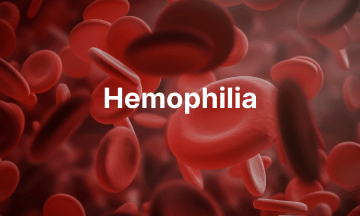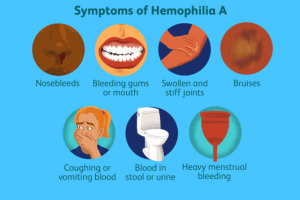Hemophilia

April 17, 2023 is World Hemophilia Day. The theme of the event this year is “Access for All: Prevention of bleeds as the global standard of care”. The day is being held since 1989, which marks the birthday of Frank Schnabel, founder of the World Federation of Hemophilia. On this day, the World Federation of Hemophilia asks famous landmarks all over the world to light up in Red to show solidarity with those suffering from the disorder.
Hemophilia is a group of rare inherited bleeding disorder in which your blood doesn’t clot normally because of deficient or absent clotting factors. They bleed longer not faster. Despite its relatively low prevalence it remains a serious medical and social problem
Hemophilia can result in:
- Bleeding within joints that can lead to chronic joint disease and pain
- Bleeding in the head/brain which can cause long term problems, such as seizures and paralysis
- Death can occur if the bleeding cannot be stopped or if it occurs in a vital organ such as the brain.
Types
There are several different types of hemophilia. The following two are the most common:
- Hemophilia A (Classic Hemophilia)
This type is caused by a lack or decrease of clotting factor VIII. - Hemophilia B (Christmas Disease)
This type is caused by a lack or decrease of clotting factor IX.
Signs and Symptoms

- Bleeding into the joints. This can cause swelling and pain or tightness in the joints; it often affects the knees, elbows, and ankles.
- Bleeding into the skin (which is bruising) or muscle and soft tissue causing a build-up of blood in the area (called a hematoma).
- Bleeding of the mouth and gums, and bleeding that is hard to stop after losing a tooth.
- Bleeding after circumcision (surgery performed on male babies to remove the hood of skin, called the foreskin, covering the head of the penis).
- Bleeding after having shots, such as vaccinations.
- Bleeding in the head of an infant after a difficult delivery.
- Blood in the urine or stool.
- Frequent and hard-to-stop nosebleeds.
5Tips for Healthy Living from the National Hemophilia Foundation’s National Prevention Program
- Get an annual comprehensive checkup at a hemophilia treatment center.
- Get vaccinated—Hepatitis A and B are preventable.
- Treat bleeds early and adequately.
- Exercise and maintain a healthy weight to protect your joints.
- Get tested regularly for blood-borne infections.
Blood transfusion in Hemophiliacs
As a part of their treatment hemophiliacs are given frequent blood transfusions. The safety of blood products is important for people with blood disorders such as hemophilia. Improvements in donor and blood screening have greatly reduced the risk of transmitting disease through blood and blood products. But the safety of blood products can be assured by the regular and voluntary blood donation by the donors. There is no substitute for blood. Donors provide the only supply of life-saving blood for those in need. Donor education and motivation is essential for safe blood donation.
Donate blood and save lives.
MD (IH&BT)
Ramaiah Memorial Hospital


